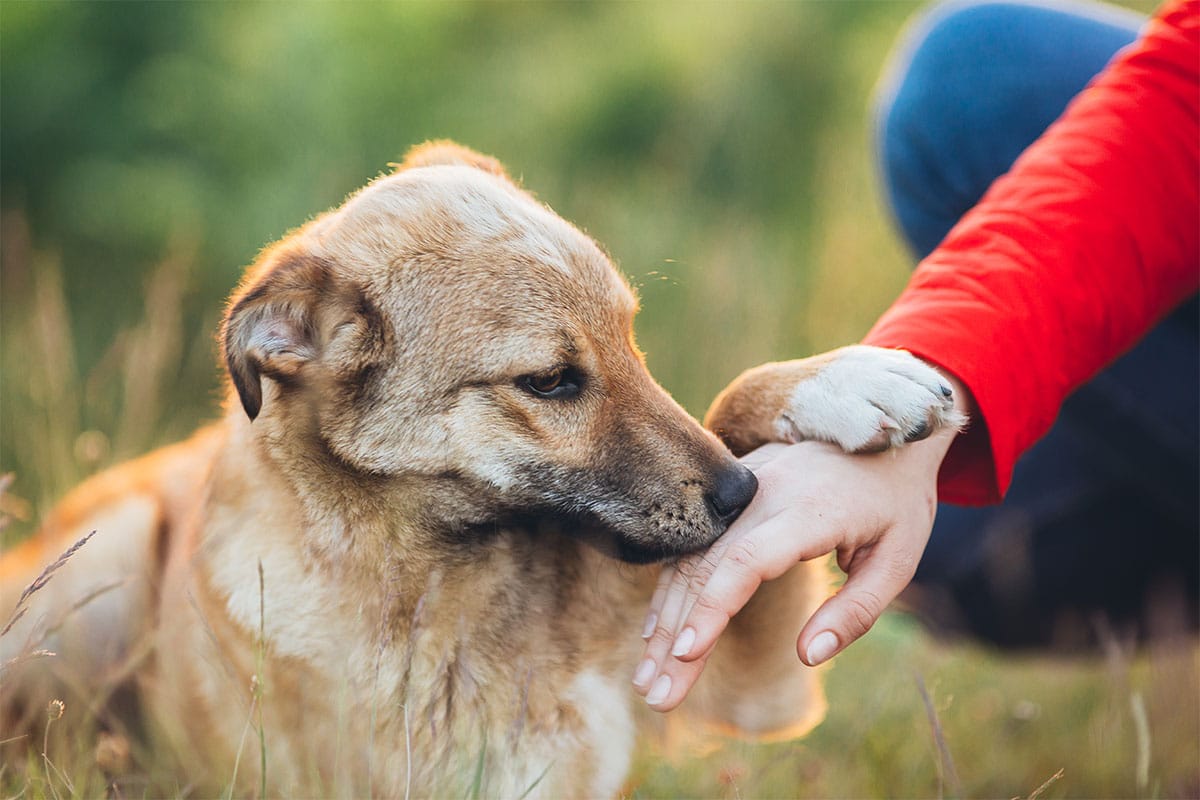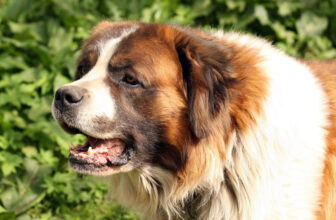
Check out our latest products
Shutterstock
They may not speak our language, but dogs constantly try to converse with us—and they’re surprisingly good at getting their point across. Through body language, eye contact, vocalizations, and dramatic gestures, our furry companions do everything short of writing a formal letter to let us know what’s happening in their world. These behaviors aren’t random; they’re intentional signals packed with meaning. Once you start paying attention, you’ll realize your dog has been talking to you this whole time—you just needed to learn how to listen.
The Tail Says It All
 Shutterstock
Shutterstock
Your dog’s mood ring is the tail, flapping out real-time emotional updates. A loose, wagging tail usually means happiness or excitement, while a stiff or tucked tail can signal anxiety or fear. Even the speed and direction of the wag have meaning—wagging more to the right can indicate friendliness, while left-leaning wags may show uncertainty. It’s like their version of texting, just without autocorrect errors.
The Power of the Stare
 Shutterstock
Shutterstock
When your dog locks eyes with you, it’s not always about challenging dominance—it can be an expression of trust, affection, or a request for something important. Dogs often use eye contact to check your mood, seek guidance, or say, “Hey, I love you.” A soft gaze indicates contentment, while a wide-eyed stare might mean they’re confused or anticipating something (probably food). It’s their silent way of asking, “Are we good? Are snacks coming?”
Barking with a Message
 Shutterstock
Shutterstock
Barking isn’t just noise—it’s a full-blown language. Different pitches, frequencies, and rhythms convey different things: a high-pitched bark might indicate excitement, while a low, repetitive one can signal alertness or a perceived threat. Some dogs even develop a specific bark to get your attention when they want something. While it may sound like random racket, it’s often their version of making a phone call, with many exclamation points.
The Lean-In
 Shutterstock
Shutterstock
When your dog leans against you, they’re not just being affectionate—they’re communicating safety, trust, and sometimes a little bit of “please don’t leave.” It’s a body-language hug that says, “You’re my person, and I want to be close.” In other cases, leaning can be a subtle nudge for attention or comfort, especially in uncertain situations. They’re not just cuddling; they’re casting emotional anchor points.
Pawing for Attention
 Shutterstock
Shutterstock
A gentle paw on your arm is like your dog raising their hand in class. Whether it’s a nudge for more pets, a hint that dinner is overdue, or a request for your undivided attention, the paw tap is a classic communication move. Some dogs even add dramatic flair, throwing a soft whine or big-eyed stare to seal the deal. They’ve mastered non-verbal guilt trips.
The Head Tilt
 Shutterstock
Shutterstock
Few things are cuter than the classic head tilt, but it’s also one of the most evident signs your dog is actively trying to understand you. Dogs tilt their heads to hear better or locate sounds and interpret your words and tone. It’s a mix of curiosity and processing power at work—like when humans squint at math problems. That adorable tilt? It’s their way of saying, “I’m listening… but also confused.”
Licking as a Love Language
 Shutterstock
Shutterstock
Licking isn’t just about taste—it’s one of your dog’s most primal ways of communicating affection, submission, and care. When your dog licks your hand, face, or feet, they may express trust, seek attention, or try to calm you (or themselves). Puppies lick their mothers and littermates as a way of bonding, and the behavior carries into adulthood. If they’re licking you, you’ve been accepted into the pack—drool and all.
Zoomies Mean Something Too
 Shutterstock
Shutterstock
Those sudden bursts of energy where your dog tears through the house like a fuzzy missile? Those aren’t random—they’re called “zoomies,” a form of emotional release. Dogs often get zoomies after a bath, during play, or simply because they feel joyful or overstimulated. It’s communication through chaos—a wild expression of “I’m so happy, I must sprint!”
Yawning Isn’t Always About Sleep
 Shutterstock
Shutterstock
Dogs yawn when they’re tired but also when they’re stressed, trying to calm a situation, or showing empathy. If your dog yawns after you do, that’s not a coincidence—it’s social mirroring, a way of emotionally connecting. In tense moments, a yawn can even be a peacekeeping signal, like saying, “I’m cool, are you cool?” It’s communication hidden inside a lazy gesture.
The Silent Sit and Stare
 Shutterstock
Shutterstock
You’re eating, watching TV, or scrolling on your phone—and suddenly, they are: sitting silently, staring at you like you’ve just wronged them. That statue-like pose is not passive; it’s deliberate. Dogs use it to get your attention or guilt you into sharing, walking, or interacting. It’s quiet but speaks volumes—mainly: “I’m right here. Acknowledge me.”
Whining for the Win
 Shutterstock
Shutterstock
Whining is often misunderstood as complaining, but it’s a flexible vocal tool for dogs to express needs and emotions. Dogs may whine when anxious, excited, uncomfortable, or just plain needy. It’s their equivalent of saying, “I need something and I need it now, but I won’t tell you what—good luck!” It’s communication wrapped in confusion, but usually with an urgent tone.
Rolling Over Isn’t Always an Invite
 Shutterstock
Shutterstock
When a dog rolls onto their back and exposes their belly, it’s not always an invitation for a belly rub—it’s often a submissive or appeasement gesture. It can mean they trust you completely, but in some contexts, it’s also a sign they’re trying to de-escalate a situation or signal “I mean no harm.” If paired with a wagging tail and relaxed body, it’s probably a playful move. If their body is stiff, they might be nervous or unsure—read the rest of the signals before going in for the belly scratch.
Tail-Chasing Isn’t Always Just Goofy
 Shutterstock
Shutterstock
While often playful, tail-chasing can sometimes signal that your dog is bored, anxious, or needs stimulation. It may look funny, but repeated tail-chasing can signal that something’s mentally or physically off. Sometimes, it’s a self-soothing behavior, especially in high-energy or anxious dogs. So if you see it regularly, don’t just laugh—listen.
The Bark Side Of The Moon
 Shutterstock
Shutterstock
You may not realize it, but your dog constantly shouts, whispers, and gestures without saying a word. Their communication goes far beyond a wagging tail or an occasional bark. Every look, lick, lean, or dramatic zoomie is part of a rich, emotional language shaped by instinct and connection. Reading these subtle cues turns confusion into understanding and deepens your bond in ways words never could. So the next time you’re being stared down, don’t ignore it—they’re probably telling you something important. You have to listen differently.







![[5G & 2.4G] 2K Indoor Security Camera for Home Security, AI Voice Change for 2-Way Talk, Motion Detection, Night Vision, 24/7 SD Recording/Cloud Storage, WiFi Home Camera, Pet Cam with Phone App](https://i3.wp.com/m.media-amazon.com/images/I/61I2U+sTT3L._AC_SL1500_.jpg?w=300&resize=300,300&ssl=1)






